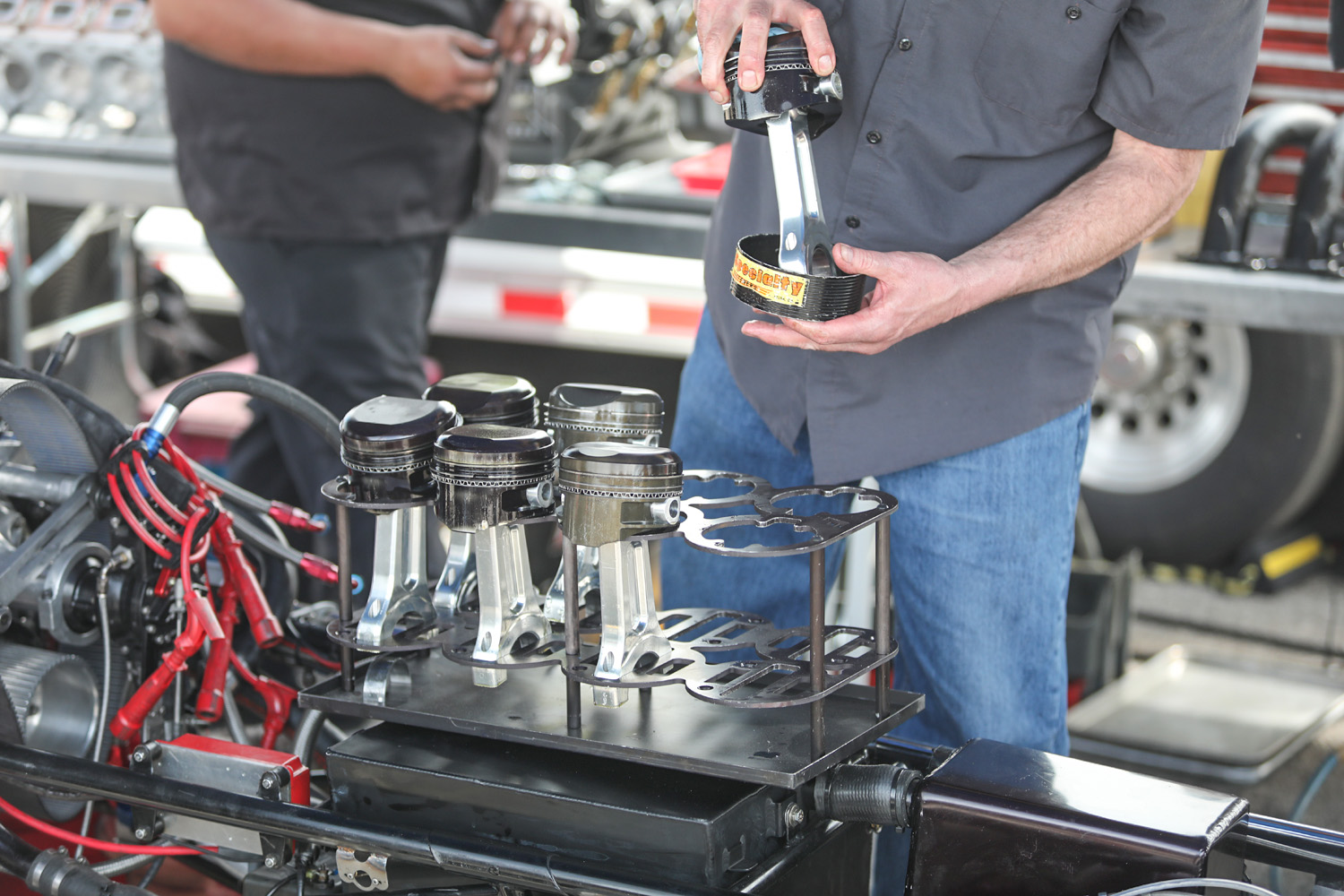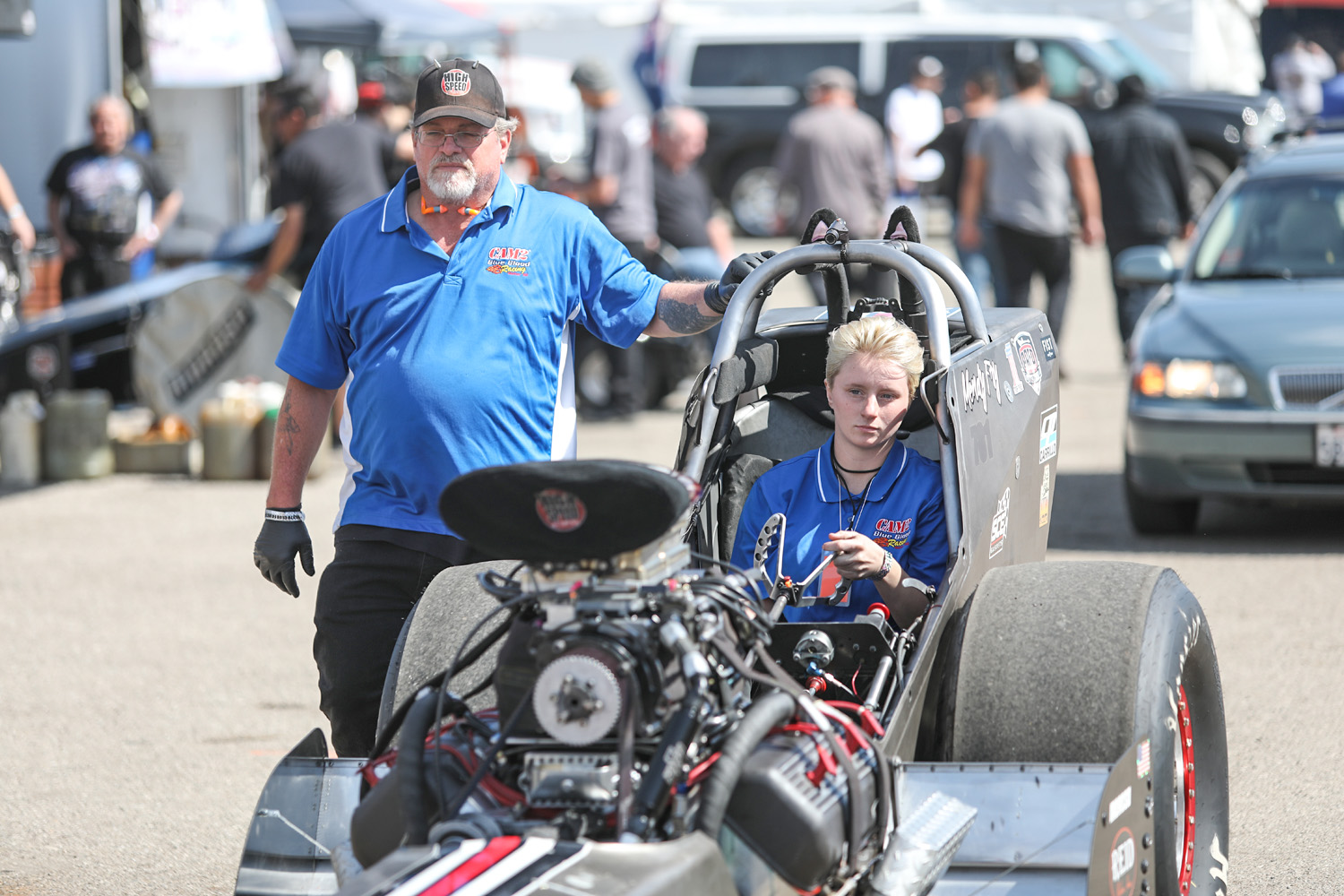Media | Articles
In the thick of the pits at Nostalgia Top Fuel drag racing
The Nostalgia Top Fuel racing series brings back the sights and sounds of 1960s and ‘70s-era dragsters with a field of modern dragsters just as raucous as the cars they commemorate. The racing is close, and the teams even closer. Although everyone takes the racing seriously, the competition isn’t as cut-throat as it was 50 years ago. Or as expensive.
That’s not to say it’s cheap. How could it be, when a single run burns 10 gallons of nitromethane and requires tearing down the engine? Keeping a top fuel dragster running all weekend is no easy feat, and there’s at least as much action in the pits as on the track. That’s another thing that makes the Nostalgia Top Fuel series such fun—fans can walk right up and talk to the crew as they wrench away.
I did exactly that earlier this month at the 2019 Good Vibrations Motorsports March Meet at the historic Auto Club Raceway in Famoso, California. I found the High Speed Motorsports crew working on Mendy Fry’s dragster before she lined up against Adam Sorokin in his Champion Speed Shop rail for the final round.


Marketplace
Buy and sell classics with confidence

Famosa is one of Fry’s favorite tracks, and she’d already set a series-record elapsed time of 5.49, making her the first driver in the series to crack the 40s. But you’re only as good as your next run, and so the team was hard at work preparing the car.
The car rides on a 225-inch 2016 Hadman chassis wrapped in black magnesium bodywork. The 417-cubic inch Hemi uses a billet aluminum block, a Velasco crank, Howards rods, and a slew of other high-end parts. It all gets a good going-over between runs.
Each run turns five gallons of oil milky green as the intense pressure of combustion pounds it into the connecting rod and main bearings and nitromethane seeps past the rings into the crankcase. Eric McMorrow, who is in charge of all the fluids, says it’s possible to pour the contaminated oil into a barrel and let the nitromethane separate, then pour it off and burn it again.
Once the oil has been drained, the teardown begins. Drag racing exacts a brutal tool on an engine, and teams replace anything that isn’t tip-top. “We have to check the bearings and the caps, so we take out the rear, we take out four and we take out two,” Alanna Kuhn says, referring to the numbered crankshaft main bearing caps.
Kuhn is responsible for the engine’s bottom end. She’s one of the youngest members of the team, having joined the team as an intern last year after graduating from Bakersfield College. She’s since joined the team full-time.

Pistons and rods are replaced after every run, although they might see another pass if they were used for just a partial run. “We’ll check the gap of the rings and make sure the pistons haven’t gone out of round,” Kuhn says. “We’ll make sure that the connecting rods haven’t stretched. Most of the time the rod is good, but the piston is junk.”
Mechanics inspect the lifters and cam to ensure they’re free of scuffing or other damage. If anything’s amiss, they yank the engine. “In order to replace the cam we have to take the whole motor out, so we’ll usually just put the spare motor in,” Kuhn says. “It’s a lot quicker than replacing the cam.”
With the main bearing caps torqued and new rods and pistons installed, the crew reassembles the engine and adds another 5 gallons of oil to the dry sump. The whole thing happens in a flash, and then everyone waits for Fry to peel off another run before doing it all over again.
Like many in the series, the High Speed Motorsports team works on a relatively lean budget and travels with just one spare engine block. But they carry at least 48 pistons, with rings, mounted to rods to every event. (You can buy junked pistons for $5, by the way. They’re not as stylish as the team T-shirts, but they make a better paperweight.)












